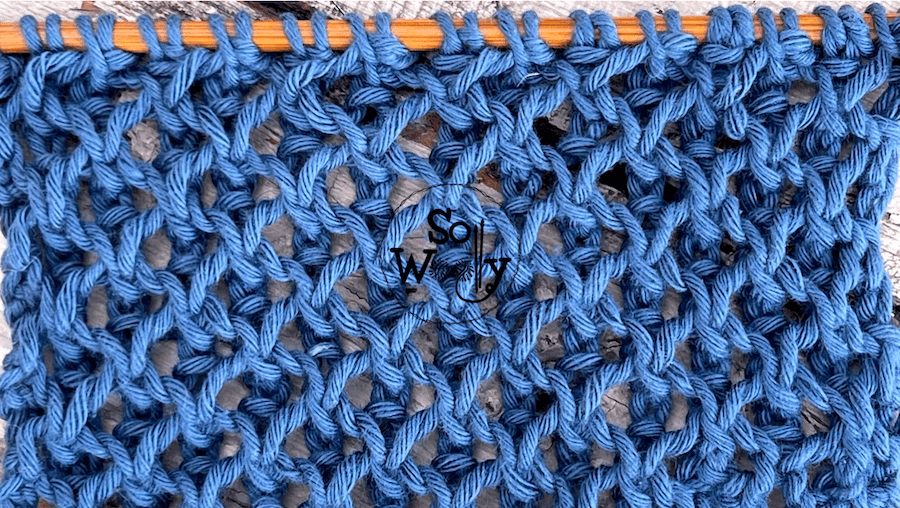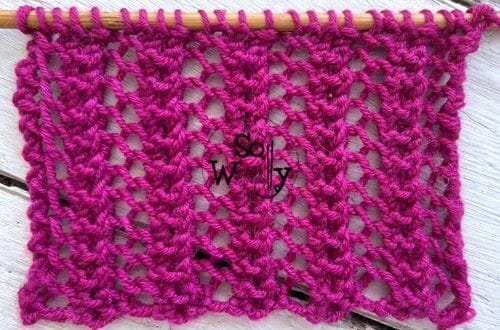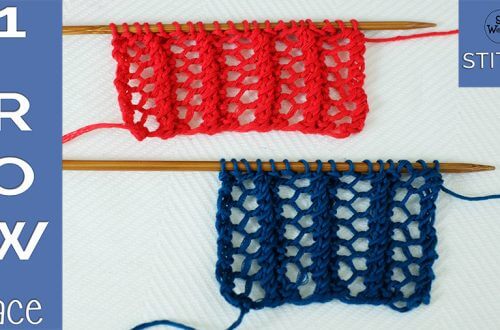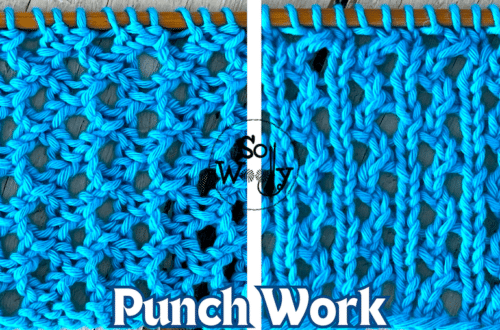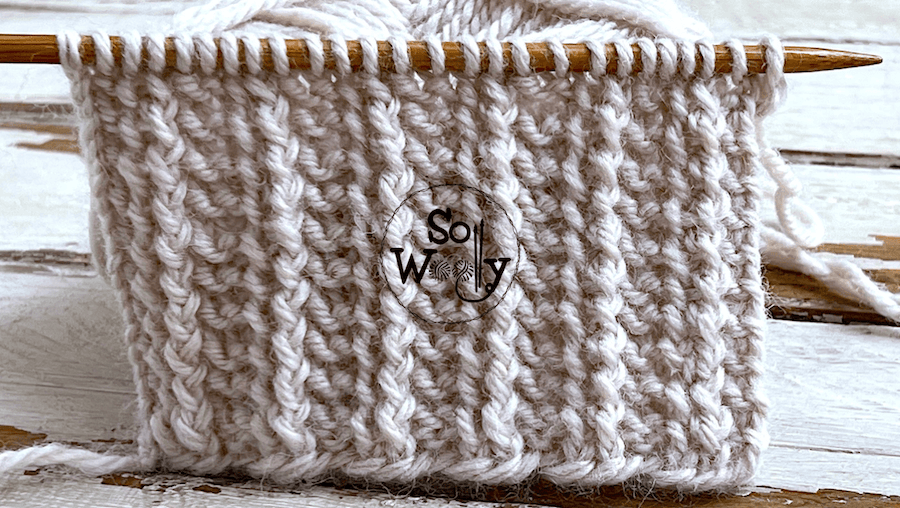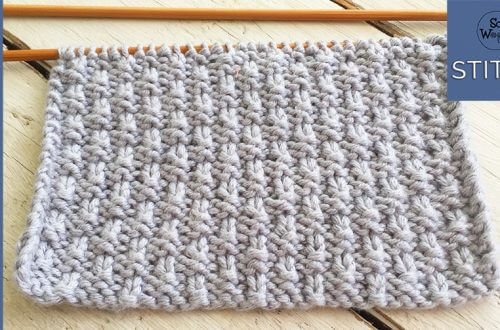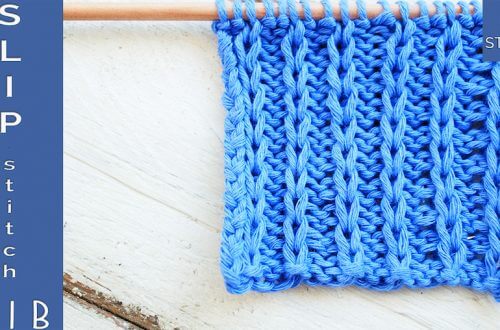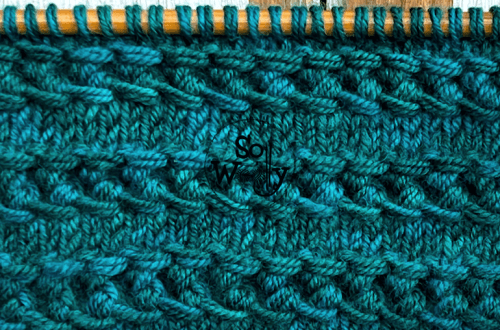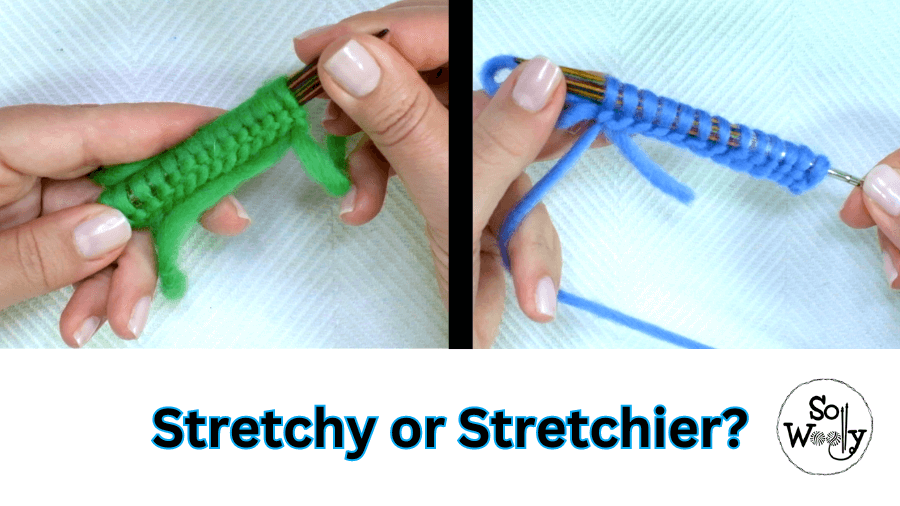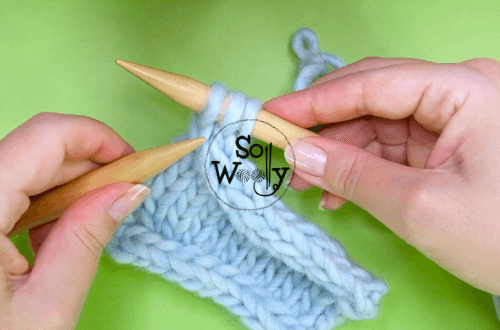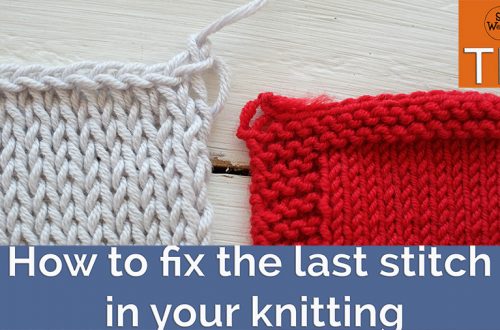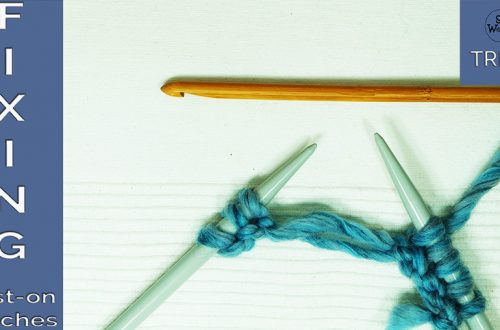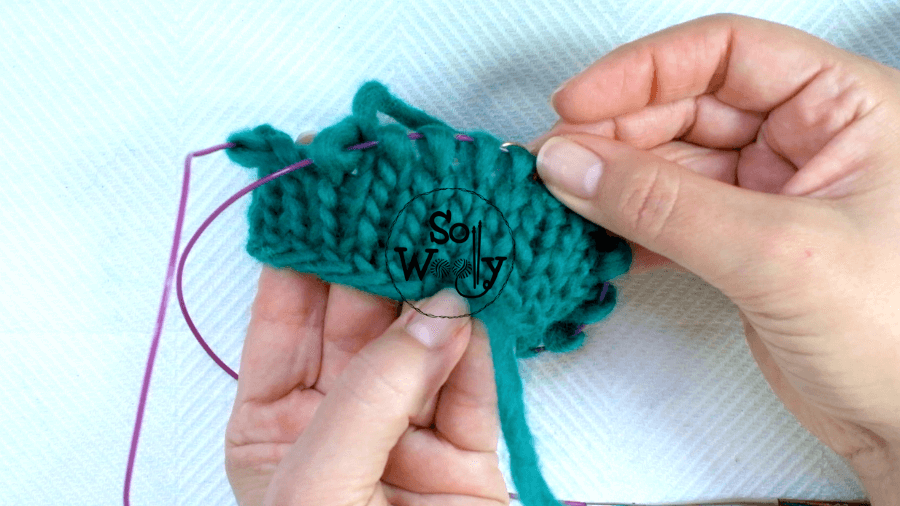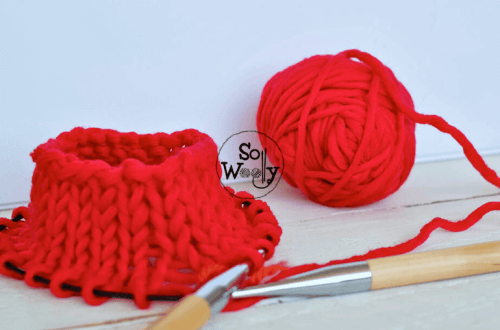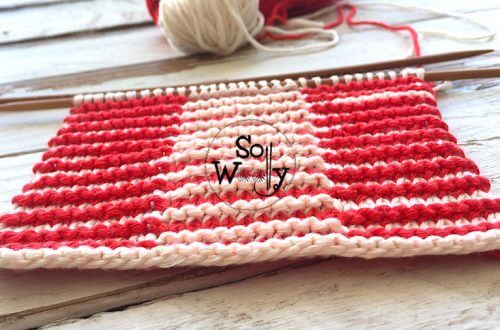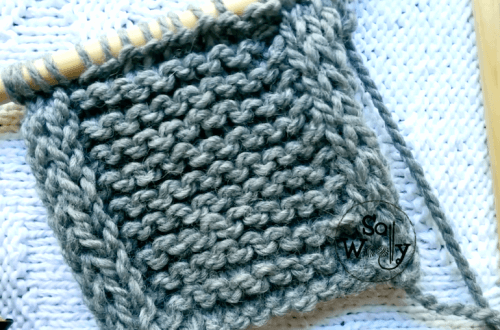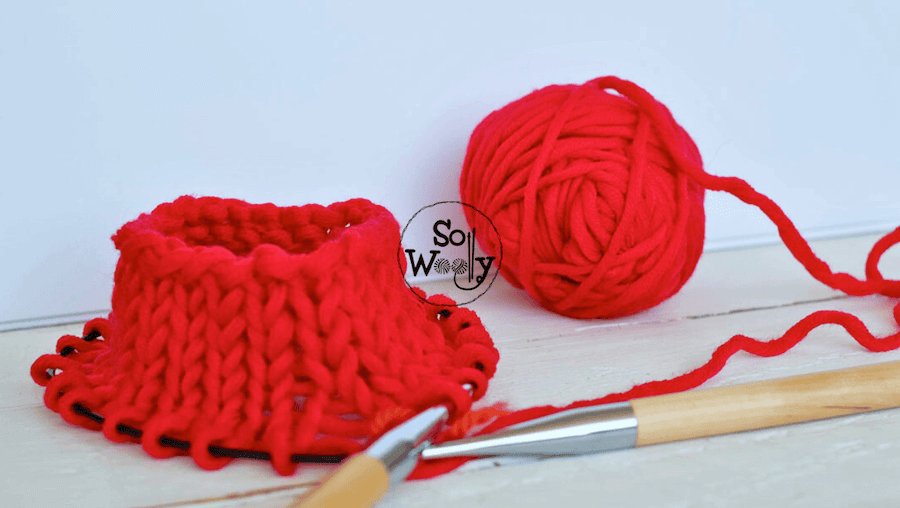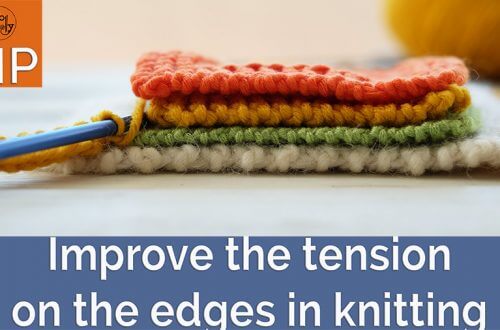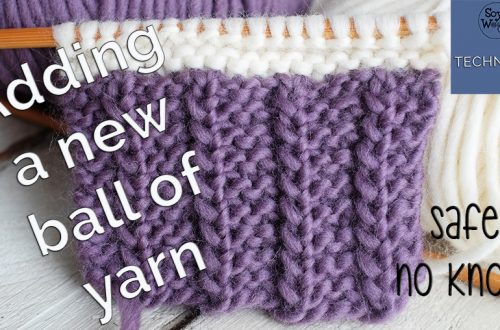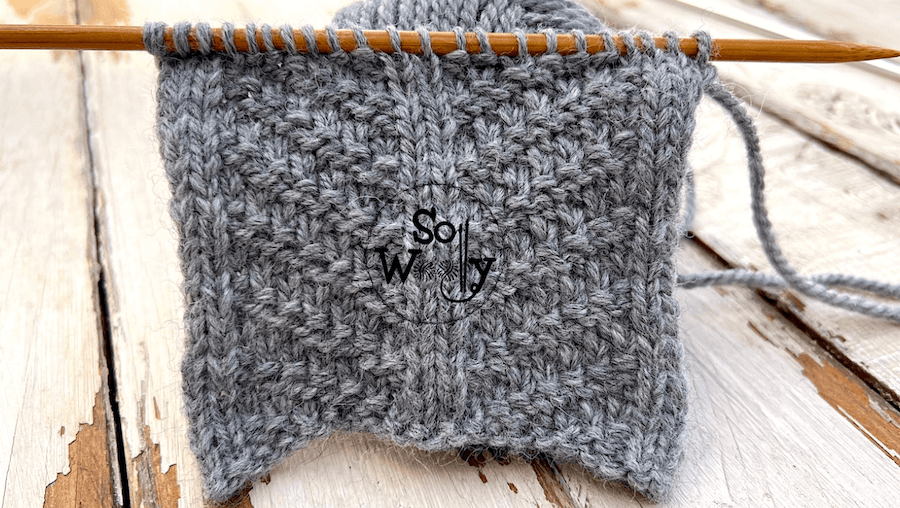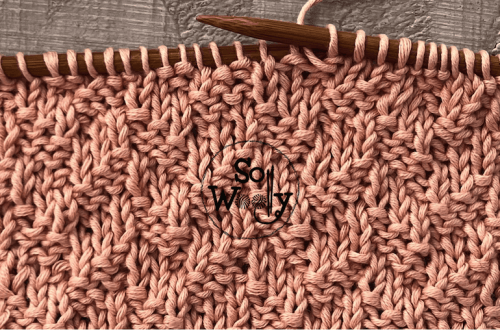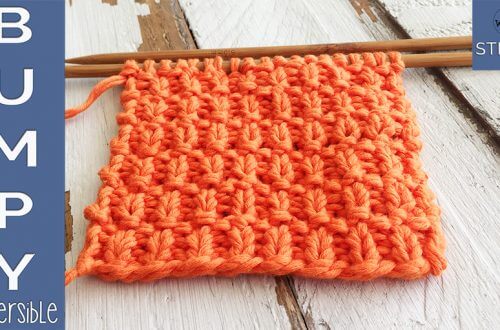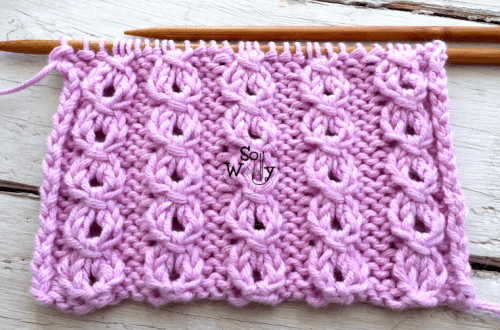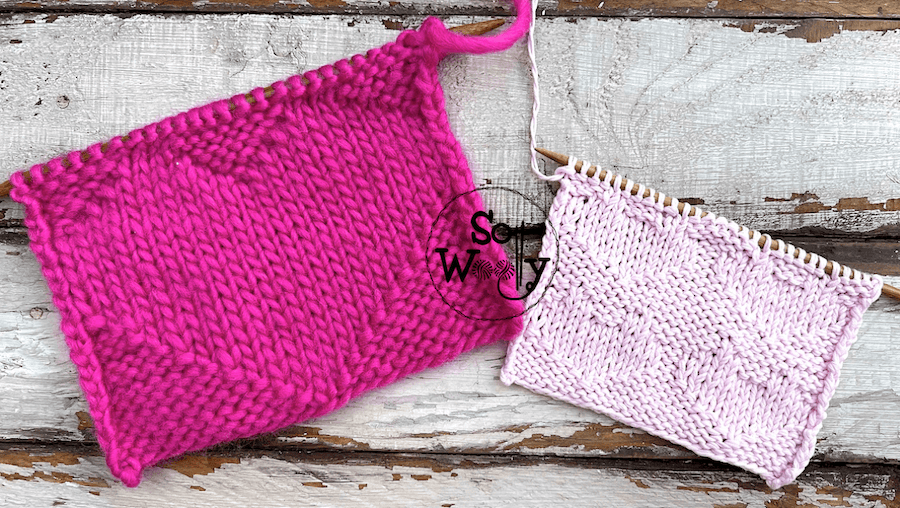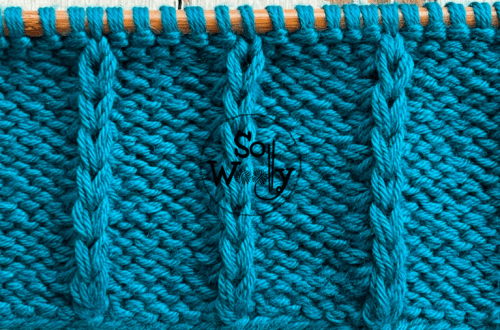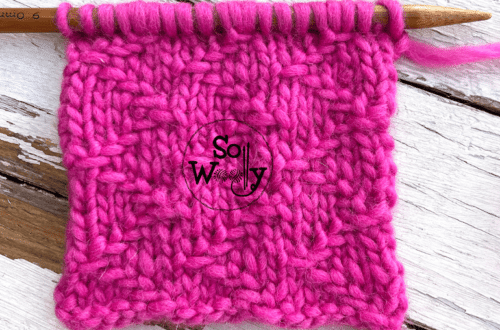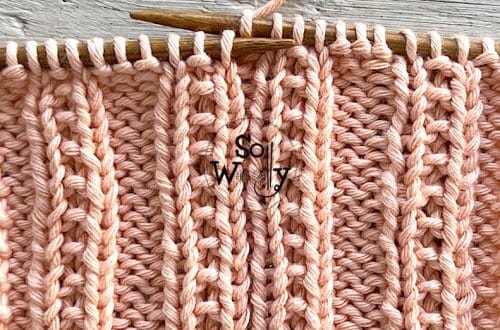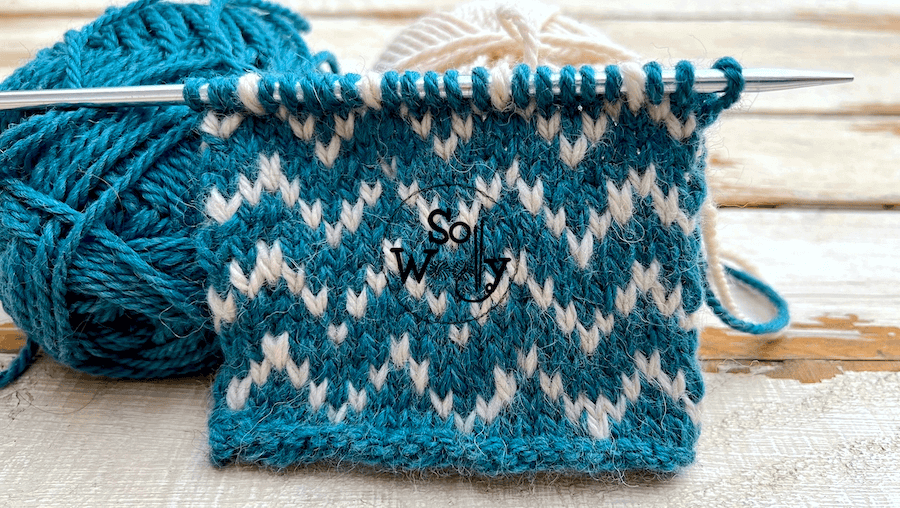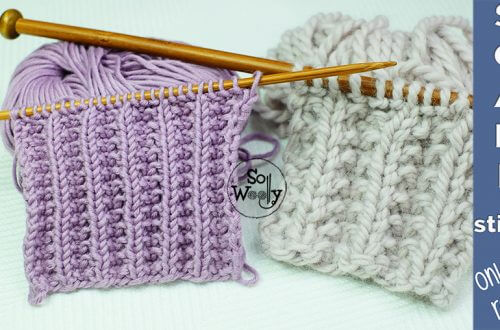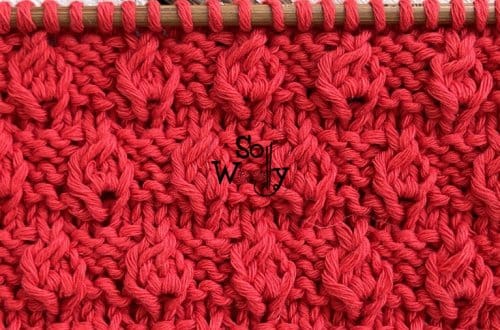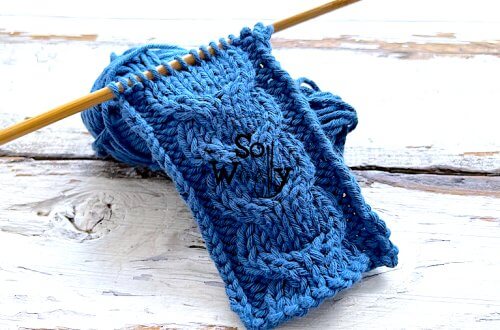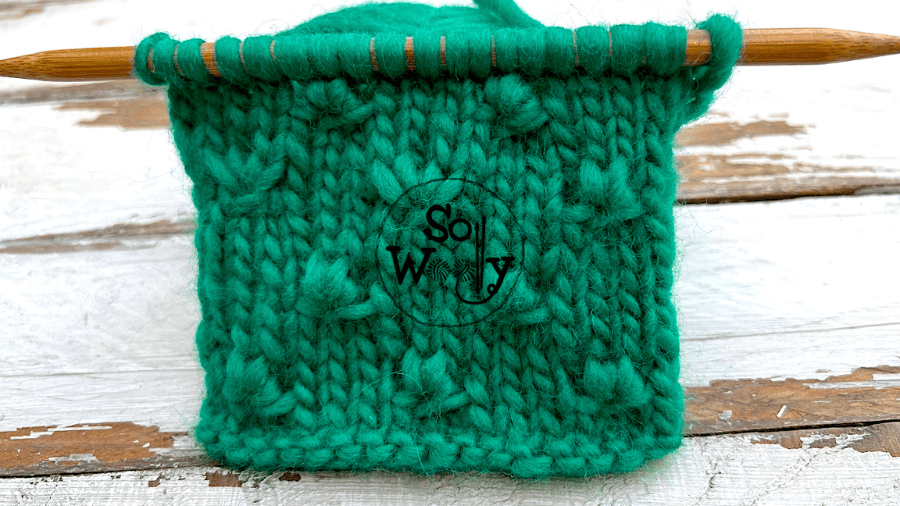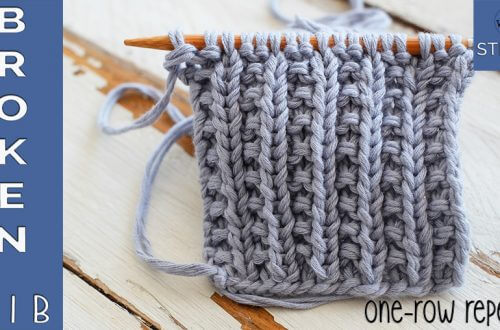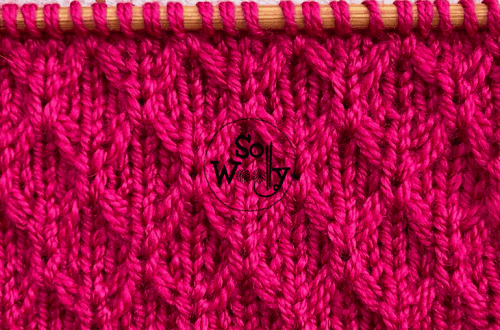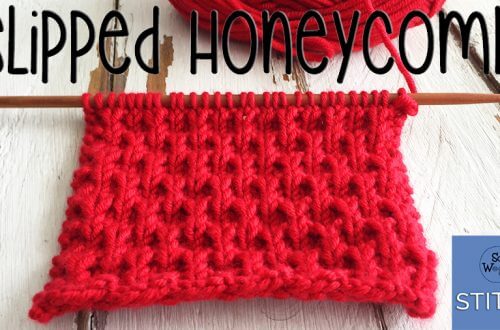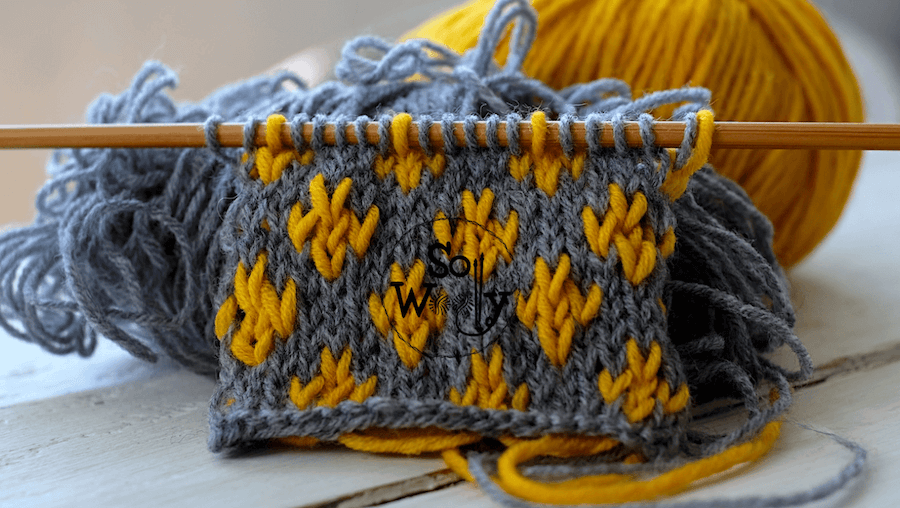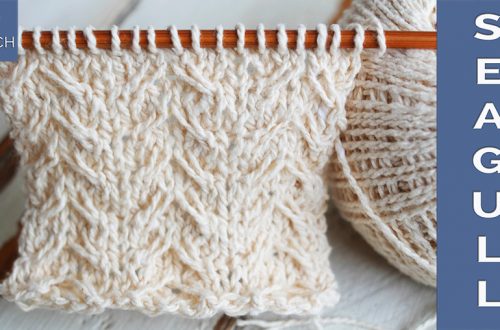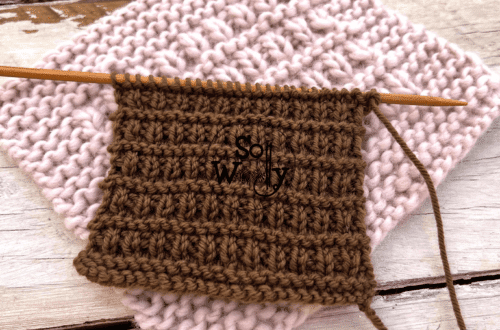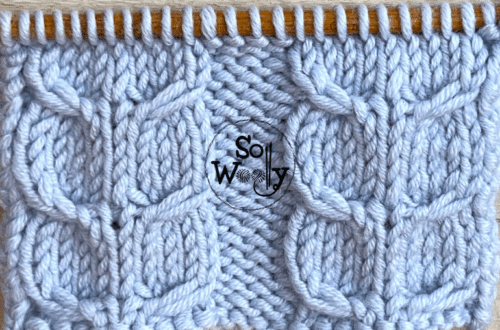-
How to Knit Reversible Lace (easy 4 row-repeat pattern)
In this tutorial, you’ll learn how to knit an amazing lace stitch, full of advantages…YAY! First, it’s a four-row repeat pattern, easy to do and memorize. After some rows, you’ll know exactly what to do, because we will be repeating the same steps time and time again. Second, although both sides look totally different, to me it’s a reversible lace pattern. They are so pretty that both can be used as the right side indistinctly, you just have to choose your favorite 😉 Honestly, its texture is something that I hadn’t seen before: The pattern looks raised on both sides (it’s another 3D stitch pattern). Third, it doesn’t curl, so…
-
How to Knit a Super Textured Stitch + video (2 rows)
Today, I’m sharing how to knit a super textured stitch, that’s reversible, and doesn’t curl! It’s a two-row repeat pattern, and if you can knit and purl, you can do it 😉 Although both sides look different, they look pretty (really textured), so I say it’s a reversible stitch pattern. Besides, this super textured stitch pattern lays flat no matter what! So, it’s perfect for a wide range of projects: It will work not only for scarves and infinite cowls, but also for blankets, hats, and even cardigans or sweaters. Furthermore, it’s an amazing pattern for dishcloths, placemats, or a table runner. Finally, in the video tutorial, I’ll show you…
-
How to do the German Twisted Cast-On + the Long Tail
Today, I’m sharing two ways to cast-on stitches in knitting: The German Twisted and the Long Tail. When I was a little girl, I learned the Long Tail method, and it’s been my favorite since then. It’s stretchy, it looks pretty on both sides, and it works for any sort of project; and I do it every time without thinking. But I always heard that the German Twisted cast-on was better for socks, leg warmers, gloves or mittens, and hats. Why? Well, it’s even stretchier, so you’ll never have a cuff that doesn’t fit. However, when I tried to do it, I couldn’t get my head around it. At first…
-
How to Knit in the Round: The Magic Loop Revisited
In my last tutorial, I shared how to knit in the round, and today, I’m revisiting the Magic Loop technique. We learned how to cast on, the Stockinette stitch, and how to bind off without a jog. However, I made a mistake when showing the Magic Loop… I learned it the “inside out way”, and over the years, I knitted dozens of projects, and never realized it! After the first 2-3 rounds, I turned the sock (or the hat inside out), because I was facing the wrong side of the work, to be facing the right side. I was so used to it, that I never thought about it. So,…
-
How to Knit in the Round for Absolute Beginners
Today, I’m sharing the basics of how to knit in the round, using circular needles; a step-by-step introduction, for absolute beginners. It’s a magic technique: You can create seamless accessories such as cowls, socks, hats, mittens, and gloves. Imagine a world where we knitters don’t have to seam anything? Yay! Well, let me tell you: It’s possible when knitting in the round! (Both, with circular or double-pointed needles). For example, you can knit a top-down sweater or cardigan, in one piece: Starting from the top (the neckline), down to the sleeves, and then the body, finishing with the hem. Moreover, this is not the only advantage when knitting in the…
-
How to Knit a Reversible Down Arrow Stitch
In this tutorial, you’ll learn how to knit a reversible Down Arrow Stitch, easy and full of texture (similar to the Little Arrows Stitch we practiced a while ago). Honestly, when I saw it, I fell in love again; there are several reasons why… First, it’s easy to knit (the only techniques required are knit and purl stitches; there’s no need to make increases or decreases). Second, both sides look pretty, and different, but lovely, so it’s perfect for a scarf, a blanket, or an infinite cowl. Third, its texture is pretty rich and cute at the same time, so it will work not only for a baby blanket, but…
-
How to Knit Reversible Hearts (One Knit + Purl pattern)
Today, I’m sharing how to knit reversible hearts, a pretty and super easy stitch pattern. Honestly, I’ve always loved the heart shape, and what I like the most is how versatile it can be, especially for us knitters. Although a Heart Fair Isle pattern would be my first choice, not many knitters are confident to try it when they are just starting. So, this pattern is perfect, because the only techniques required are knit and purl, such as The Pennant Stitch which we practiced a while ago. Besides, it’s perfect, not only for blankets, but also for children’s accessories, sweaters or cardigans, and home decor. For example, if you prefer…
-
The easy way to wrap floats (Fair Isle knitting)
Today, I’ll show you a quick and easy way to wrap floats when knitting Fair Isle. Actually, before explaining myself further, I’d like to explain what floats are, especially, for those knitters who aren’t familiar with the term yet: Floats are the strands that show at the back of the fabric (the wrong side of the work) in any Fair Isle pattern. And why should we trap or wrap the floats? First, after my tutorial “How to Knit Your First Fair Isle Pattern”, I was asked by many little Woollies the best method for dealing with floats. Second, because it’s necessary! When we work several stitches in one color, we…
-
How to Knit the Knot Stitch Pattern (for extra texture!)
In this tutorial, I’m sharing how to knit the Knot Stitch, a cute, floral pattern, easy and fun to do. I think it’s also one of what I like to call 3D patterns, because the knots definitely stand out, no matter if you’re working with a fine yarn! Moreover, the beauty of it, is that you can decide where to place the knots because the space between them can be easily adjusted 😉 Therefore, the Knot Stitch is a pretty versatile pattern; use it for a sweater, a hat, a cushion, or for example, make a blanket, a scarf, or a cowl. However, if you choose to knit a piece…
-
How to Knit Your First Fair Isle Pattern (Fleur-De-Lys)
In this tutorial, you’ll learn how to knit The Fleur-De-Lys stitch, a gorgeous yet easy pattern; a classic of the knitting world, even though it’s French 🙂 I think it’s a perfect introduction to the Fair Isle (also known as stranded colorwork or Jacquard), a technique used to create repetitive, continuous, big or small designs using two or more colors. Furthermore, the real Fair Isle technique, named in honor of a Scottish island (part of the Shetland Islands), consists of working with up to five colors, using two of them on each round. However, the Fair Isle technique must not be confused with Intarsia; another technique, used to knit solid…
